By Charlotte Martinez/ Photos by Michelle Rutt Rebecca Alvarez, transfer from Mexico and senior at the Santa Fe University of Art and Design admits she sees things most people don’t. It’s not dead people. What she sees is very much in plain sight, yet overlooked in modern society. Alvarez sees it because she works with it, she slaves over it and has dedicated her college education to it. Some call it visual communication, others call it the art of persuasion. Alvarez says “more than anything [it’s an] aspect of functionality.” The secret is summed up in two words: graphic design. “Design could be related in any sphere like the government, politics,” Alvarez begins. The designer, for example, that created Helvetica, a typeface used especially on subways in New York, describes the influence of checkboxes on electoral ballots. Alvarez says “design could change how you as a voter go and vote.” “You have to kind of live with the idea,” Alvarez says, “that more often than not people won’t recognize that something is…” she looks up as if to form a thought. Because English is her second language, Alvarez’ thoughts move faster than her speech. She adjusts her black beanie and begins again. “Design is taken for granted. Sometimes you don’t even realize this is well done. You either like it or don’t like it. Does it function or doesn’t function?” Functionality is one reason Alvarez decided to transfer to SFUAD. Born in Austin Texas but raised in Queretaro Mexico, Alvarez says her decision to return to the States was due to the University’s vilification of graphic design as an art form. “In Mexico,” she says, graphic design “is not as appreciated. It’s not well paid and the culture [suggests] that it’s not needed.” She...
High Mayhem
posted by Shayla Blatchford
By Shayla Blatchford Last weekend, High Mayhem Emerging Arts hosted duo CD releases with local artists iNK oN pAPER and soloist Luke Carr. Located just south of Santa Fe’s downtown area, High Mayhem is an arts studio tucked away in an industrial dead end off of Siler Road. The volunteer staff accepted a suggested donation of $10 at the door, which included a digital download of each band’s newly released album. Luke Carr opened the show with his battery charged guitar, which became the first of many instruments to be looped as part of his full band. In between sets, the audience drifted out of the venue and into the fenced-in “front yard” with a bonfire as its centerpiece. As iNK oN pAPER closed the evening, the looping continued with Carlos Santistevan on bass and manipulated drum beats by Milton Villarrubia III. In comparison to Carr’s building layers of looped instruments, which become the foundation of his track to top with vocals, iNK oN pAPER created a technical depth to their process of loops and samples that are only intended to be ripped to shreds in their experimental electronic battle of drum and...
A Day at the Legislature...
posted by Shayla Blatchford
By Shayla Blatchford On a day like this, just near the halfway mark of the legislative session, there is never a dull moment at the State Capitol (Roundhouse) in Santa Fe, NM. The happenings range from union workers taking a stand and confronting their senators outside the Chamber House doors, to the continuous inside jokes that run through the mailroom during the dispersing of bills. In addition to the constant waves of people flowing from one committee hearing to the next, the Roundhouse has also made time to celebrate its culture and history later this afternoon. It may seem like a stiff environment when looking in from the outside, but once you get to know how accessible everyone is, especially within the senate, you begin to realize how you can truly be heard as an individual. The ties and suits may seem a little intimidating at first, but those who work within the Capital are just doing their jobs like the rest of us—except some of them are doing it for close to nothing. Per diems, for some, don’t always cover the cost of lunch and just to give you an idea, you can buy the cheapest B.L.T. in Santa Fe at the Roundhouse for close to $2.50. In addition to paying for a hotel for up to two months and getting by on a few dollars for meals, the hours are long and there are no breaks. Outside the double doors, it’s hard not to notice the group of men in their cowboy hats, boots and belt buckles and you start to wonder who these men are. They’re not in suits sitting behind a desk reviewing bills or taking a breather in the exclusive lounge located behind the Chamber House doors. They look...
Night of Illumination
posted by Luke Montavon
By Luke Montavon Night of Illumination was the Feb. 22 culminating event for The Snow Poems project, featuring locally created poetry in public space. A complete map is...
NMSA Theater
posted by Amanda Tyler
It is opening night, the house is open, and the set is not even finished. The director is exasperated. His stage manager informs him that the set was not finished because they “ran out of money.” “You finally get used to one way of doing things and they up and change all of the rules on you,” he exclaims. His writer, who is pacing the stage with loud nervous high-heeled clicks, turns on him. “There are no rules in art!” she shrieks, sounding half-insulted and half-horrified. The two are interrupted by their stage manager, who is trying to delicately remove them from the stage so that their play can commence. “There shouldn’t be,” she says, “but those days are past.” She shoos them off stage, the house lights dim, and the play within the play Gun Shy is finally allowed to begin. Gun Shy is a comedy written and directed by Joey Chavez, and performed by high school theater students at the Santa Fe charter school New Mexico School for the Arts. The play breaks the third wall and brings up questions about what constitutes art, and what is or isn’t allowable in art, over and over again. The answers to these questions, however, are perhaps more apparent in the people behind the play than the script itself. Before their performance, the cast paced, stretched, and applied last minute make-up or costume touch-ups while practicing a few last line-throughs—reciting their lines in order without blocking or acting through the entire play. Their director and teacher Joey Chavez entered the room intermittently and watched them intently, without interrupting the focus coursing through his students. Cris Lannucci, an NMSA senior who plays the author of the play within the play, is eager to sit for an interview,...
Night of Written Zen with Shodo Harada Roshi...
posted by Charlotte Martinez
By Charlotte Martinez/Photos by Natalie Abel From the wall paintings on St. Francis’s auditorium in downtown Santa Fe, an image of the catholic saint gazes with pastel eyes at the scene forming in the front of his pews. Three robed members of the Tahoma One Drop Zen Monastery from Whidbey Island are seated on the stage, peering indifferently at the audience as they file in. A fourth member stands, monitoring a pile of blank canvases and a bowl of black ink on the stage floor. Positioned in front of these tools is at camera that projects the image on a large screen. This, no doubt, is for the convenience of those audience members who just hate when they can’t see. Japanese Master Shodo Harada Roshi stands on Francis’s stage with his hands clasped against his long black robe. He, like the others, looks serene and statuesque in what I can only label as a zen zone, but looking at the wise wrinkles and slick head I can’t help but calculate the master’s age. If he was born in 1940, his face is that of a 73-year-old, but even this doesn’t seem right. His face is too shaped and his posture too perfect; could this be a side effect of a disciplined life? If I feel like shaking his hand to obtain wisdom, is that too “western” of me? His interpreter and facilitator, Daichi-Priscilla Storandt, sits next him with a kind-looking grin which contrasts the Roshi’s stoic one. If balance is essential in Buddhism, then the coupling is just short of perfect. Books on the Roshi’s calligraphy works are for sale in front and I wonder if St. Francis objects to this display. The Roshi perhaps feels this too, and despite his title, practice...
Mesa Recordings: Big Things in Store for Santa Fe...
posted by Christopher Stahelin
By Clara Hittel/Photos by Christopher Stahelin I am provided with hot tea and guided outside to the shed, amidst small patches of snow still clinging to the high-altitude chill. Within the odd structure that sits apart from Paul Groetzinger’s idyllic mountain home is the studio of Mesa Recordings. Groetzinger apologizes for the mess, while I decide that a variety of instruments scattered around the floor and dangling ominously from shelves overhead is exactly how a recording studio should look. He sits at his desk and I settle in by the space heater. Paul Groetzinger is a member of two well-known Santa Fe bands—D Numbers and Detroit Lightning—as well as a DJ and solo artist known as Feathericci. He is also now one of the founders of Mesa Recordings. I met the astoundingly friendly Groetzinger when I went to see Detroit Lightning play at the Cowgirl last week. It didn’t take me long to realize that this was the same Grateful Dead cover band I had the pleasure of stumbling upon at Totemoff’s—the bar on the slopes of the Santa Fe Ski Basin—a few weeks ago. Beats on the Basin is a regular winter occurrence, it turns out, presented by Hutton Broadcasting and benefiting the Adaptive Ski Program. Groetzinger and fellow Connecticut-born band mate Ben Wright, who have been playing music together since they were 14 years old and are both members of D Numbers and Detroit Lightning, run sound for every Beats on the Basin show. They are very busy men indeed. “I really like having a diverse musical life,” Groetzinger shares. “It makes me feel complete to do a bunch of different things. We’d sunk into the D numbers thing really heavily for many, many years and it’s nice that we’re all at...
A MIX to Remember
posted by Brandon Ghigliotty
By Brandon Ghigliotty/ Photos by Sandra Schoenenstein Taking place on the third Thursday of every month, February’s MIX Santa Fe was held at the Santa Fe Culinary Academy. The upper-level space consisted of winding rooms opening into a large demonstration kitchen. Several platters of food were exhaustively replenished during the event by Executive Chef Rocky Durham and his crew. “People love the Azerbaijani flatbread,” said Durham. It was delicious. Chewy, herbed bread with a sharp tinge of cheese. It was easy to see why the platter emptied so quickly. Other platters held shrimp spring rolls, pork-filled lettuce wraps and vegetarian nori rolls. Blue Corn Cafe & Brewery manned the cash bar, initially serving beer in glass jars, then abandoning them for the more traditional plastic cup. People met up, introduced each other to new acquaintances, and generally broke the MIX drought brought on by MIX’s absence in the months of December and January. Speaking with Kate Noble, MIX coordinator and special projects administrator with the Economic Development Division for the City of Santa Fe, the past 31/2 years of MIX have had their ups and down. Yet, even during the low points, “We were still hearing about people making connections or getting work and being able to stay in Santa Fe,” Noble said. Entrepreneurs took the opportunity to hand out flyers on their projects, Dawn Hoffman of Only Green Design gave information on “Upcycle Santa Fe”: a festival to come up with creative solutions to the ecological issues that face the community. Another entity on site was the graphic design collective known as “Hexagono”, a group of Santa Fe University of Art and Design students, seeking donations to their project “The Importance Of,” which is “A 200 page hard-bound book exploring Graphic Design as Contemplative Art.” One...
The Art of Homes
posted by Nick Martinez
By Nick Martinez/ Photos by Luke Montavon Last weekend, ARTfeast was in full motion, including the gorgeous Art of Homes tour. The Art of Homes tour brought locals and visitors alike to check out some of Santa Fe’s most beautiful homes that are currently on the market. Arranged throughout these homes is artwork from local Santa Fe galleries. Before the tour commenced, there was a committee in place with the interesting challenge to decide which gallery would be paired with which house. “There are a lot of art collectors, from in and outside of Santa Fe,” said real estate agent Efrain Prieto. “It’s funny, because I’m a painter and have actually sold houses with my own paintings before.” If you took the tour in order, the first stop was at a lovely 3-bedroom, 2-bath, mid Century Modern estate on Camino Encantado. The home featured artwork from Beals & Abbate’s Fine Art gallery, including various cast stone statues. The gallerys are tasked with combing through the artwork from their galleys and combining them with the artwork already hung up by the home owners. “It’s nice to take a look at how they’re already decorated, then decorate yourself,” said Bobby Beals, owner of the gallery. Further along the tour was a 3-bedroom, 2-bath, El Torreon home on El Caminito, formerly owned by country music star Randy Travis. While there are many reasons why this home is beautiful, two features that stand out are the tower that the home was originally built around, which due to the lack of a bathroom I would suggest turning into a studio, and the metal tin work on the cupboards. The home featured artwork from the Worrell Gallery downtown, and the terra-cotta sculptures went hand in hand with the more storied...
Hey, It’s Santa Fe / N(H)M-AKA-MP...
posted by votergirl
By Mark Feigenbutz/ Photos by Tim Kassiotis If you’re young and fancy yourself hip and find yourself in Santa Fe and want to find every other youngin hipster Santa Fean, get to a Meow Wolf event. If you’re young and fancy yourself hip and find yourself in Santa Fe and you don’t know what Meow Wolf is, then you’re either old or unhip or located somewhere other than Santa Fe. If you’re old, look them up in the Yellow Pages. If you’re unhip, Google them on your Blackberry. If you’re not located in Santa Fe, then you won’t understand Meow Wolf’s significance anyhow. What is Meow Wolf’s significance? Well, it’s, like, the only organization of its kind that gets young, hip Santa Feans together to do uniquely young and hip, Santa Fean shtuff. What kind of shtuff? Shtuff like trippy, artsy-rave shindigs where you put neon face paint on your face as a starting point for it to end up elsewhere, find yourself in no less than three conversations about The Universe (yes, The Universe is a pronoun) and dance your B.O. off until it coalesces into a wonderfully Santa Fean B.O. Jambalaya. Why do I keep asking myself questions that I inevitably answer and, more important, why do I keep employing the word “shtuff?” Because I’m young, I’m hip and I’m finding myself more and more “Santa Fe.” “Santa Fe” is less a physical location than an anomalous “Huh?” To illustrate, photographer Tim Kass and I showed up to the event at 9 p.m. because the bar owner said it started at 8 p.m., when, in actuality, it got rolling around 11-ish. I’ve only been in Santa Fe for one year and seven months and this did not phase me in...
Rubbing Elbows
posted by votergirl
By Mark Feigenbutz/Photos by Tim Kassiotis I don’t rub too many elbows. Not lately, at least. For the past couple years, my elbows have been as rub-free as a one-legged cricket. But in light of my recent trip to the New Mexico State Legislature, I think I should invest in some elbow callous-generating activities. The Legislature building is an important building in that it looks important (and that you must capitalize it in writing). If you’re easily thrown by marble or wood grain, you might miss the subtler, more human elements of the subtler, more human humans who inhabit it. Now, I’m sure the argument could be made that it is, in fact, “important,” but you’d be wrong because this is my article. Despite what the sunglasses-inside-the-building, Men’s Wearhouse suited d-bag would have loved for you and I to be fooled into believing, he was certainly not as important as Joe, the proud café lounge manager, or Crystal, the diplomatic mail room supervisor, or Dennis, the corner market bread sample hander-outer across the street. I rubbed my first elbow with Joe Mora, the café lounge manager. My first impression of Joe was that he seemed like a down-to-the-salt-of-the-earth, good dude. He’s the kind of guy that you wouldn’t mind leaving your 8 year-old son with in a pinch. (I may even daughter-approve him.) He was also proud of his job – a rare phenomena that I, with a furrowed brow and index-finger-and-thumb supported chin, appreciate. When I asked Joe what exactly he did, he immediately clarified that, “We’re here from 5 ‘til 3.” His crew behind him seemed to appreciate their inclusion in the interview. Why do they get there that early? Because “everything is made from scratch,” from “the red chile, green chile,”...
Water
posted by Luke Montavon
By Luke Montavon After nearly two semesters of hard work, Water is finally here. Water is the story of the village of Agua Fria and their struggle for existence after losing their water rights to the city of Santa Fe. The play is split into two parts. Part one encompasses how different cultures celebrate having water as a resource. Part two details the story of the villagers of Agua Fria, a people without water as a resource. Water raises the question of “what happens both as an individual and a community when a basic natural resource is taken away?”. The play was created entirely from found written documents and transcripts taken from interviews conducted by students of the documentary theater...
Cirque du Santa Fe
posted by Brandon Ghigliotty
By Brandon Ghigliotty/Photos by Sandra Schoenenstein “Mr. Speaker gentlelady from Chavez County, do you love the lesser prairie chicken?” The house gallery erupts in laughter. My reaction is slightly different. I’m uncomfortable with the fact that someone pleading to thwart a species’ extinction is being humiliated. I exit the chamber, shaking my head clear of the ringing laughter. Ideas escape me and the only persistent one is shot down. My colleague convinces me it is too early to visit the bar. I consider writing about the art of the Roundhouse, the paintings of men in cavalry coats striding across the desert, the buffalo built from recyclables (which happens to mark North in the Roundhouse) and the various other bits of furniture and sculpture that have found a home here. It would be easier to approach the pieces of art and their placards than it would be to approach the mayor while he sips his soft drink. I do neither. My photographer arrives and we re-enter the house gallery. Her eyes light up. The lesser prairie chicken is still the topic of debate. “Mr. Speaker, gentlelady…” The question rambles. A frocked woman is trying to ask whether helping the lesser prairie chicken’s current plight would be addressing a drought problem rather than a lesser prairie chicken problem. That perhaps intervention to mark the lesser prairie chicken as endangered is not the best answer to an issue brought on by drought conditions. The response she receives: god is in control of our drought situation. I am stunned. My brain is sick with the implications of this statement. If god made us, and we’re killing the lesser prairie chicken and god simultaneously is trying to snuff them out with a drought. Then god clearly has no love for...
Jake Trujillo: On Barista-ing, Music, and Being House Majority Liaison...
posted by Christopher Stahelin
By Clara Hittel/Photos by Christopher Stahelin Jake Trujillo sits on a bench at the edge of the room observing a heated(ly comical) debate on the preservation of the lesser prairie chicken between state Rep. James Roger Madalena, D-Rio Arriba, and state Rep. Candy Spence Ezzell, R-Chaves. After some staggeringly unprofessional questioning and a representative’s impersonation of a chicken, House Memorial 21 passes—“A memorial requesting that local officials support local efforts to preserve and protect the lesser prairie chicken and oppose its listing as “threatened” pursuant to the Federal Endangered Species Act”—and Trujillo slips from the House. Photographer Chris Stahelin and I later find him looking down at us from the second floor balcony. We wave at each other, and then the House Majority liaison disappears from the balcony in order to come down and speak to us. I first met Santa Fe-native Jake Trujillo in 2008. He was playing guitar and singing an original composition at Meow Wolf’s old location off Second Street. I thought he was a very impressive songwriter, and after that I saw him everywhere I went like he was a character in a comedy about a small town—the character that seems to work in every shop and café. (Note: Trujillo actually has worked in many cafés around Santa Fe.) This is why I was not surprised to find him working at the New Mexico State Legislature. “I got pretty lucky in the grand scheme of things—I got a pretty cushy job,” he grins. This year is Trujillo’s fourth at the Legislature—a job he says simply fell into his lap. He deserves it, even if it’s only temporary. “…It was always harder…to go back to barista-ing after working at the Roundhouse,” he admits. “Being a barista can be hard...
NM Capitol Draws More Than Just Politicians...
posted by Michelle Rutt
Even from curb at the intersection of Paseo de Peralta and Old Santa Fe Trail, you can hear the passive aggressive bickering of seemingly bored politicians from inside the New Mexico Legislature. Upon entering the grand rotunda, you are quickly glanced upon by the pampered-up middle-aged tour guides, but since it is a public building, the idea of free reign to walk wherever one pleases is a much more tempting offer.
Oscar Night at the Screen...
posted by Charlotte Martinez
By Charlotte Martinez/ Photos by Christopher Stahelin It’s all about timing and planning for the unexpected. That’s the movie business for you. The sky is clear at 3:30 p.m., Feb. 24 on the Santa Fe University of Art and Design campus. The Screen, SFUAD’s independent movie theater and my work place, has a sidewalk leading to the entrance and though the concrete is cracked and dusty, I feel like I’m passing Hollywood’s red carpet. There’s a lot of excitement the day of SFUAD’s Oscar Night, but like I said, the movie business isn’t predictable. Here at the Screen, Oscar Night means a live stream of the 2013 Academy Awards for students and faculty of the Film Department. In addition, this event premieres the Film School’s first Shoot the Stars production, two student-made films featuring big name actors Wes Studi, from Avatar, and Canadian actor Luke Kirby. My red carpet disappears, however, when I’m told we’re running 20 minutes behind. Peter Grendle, manager of the Screen and professor at the Film School, strides in with his usual short-breathe grin (I’m convinced he runs everywhere). I tell him our last movie will let out 20 minutes late. He says he knows and we make a plan. It’s 3:45 p.m. I smile at the gathering audience and promise that they’ll be let into the theater soon. There’s some confusion as to when the student films will begin. “We’re playing it by ear,” I say. This turns out partially true. For the first 30 minutes my ear stays glued to the theater’s closed doors, behind which Peter struggles to stream cable to both the Screen and the monitor down the hall in Studio C, where the Oscar party begins. This party is legit! Red carpet, decorations, paparazzi, finger...
Al-Mutanabbi Street: A Desecrated Tome
posted by Brandon Ghigliotty
By Brandon Ghigliotty/Photos by Shayla Blatchford On March 5, 2007, a dagger pierced through the intellectual heart of Baghdad: Al-Mutannabi Street, known for its cafes and bookshops, was bombed. The motivations of the people responsible for this are clear: silence the vehicle of Iraqi expression. The response from Beau Beausoleil, a San Francisco-based poet and bookseller, was to organize a salvo of broadsides, defiant posters proclaiming, “The past is our culture/Remember our future” and “Al-Mutanabbi Street is a phoenix that will be reborn from the ashes.” The call for broadsides was answered by more than 130 printers worldwide. The exhibition entitled “Al-Mutanabbi Street Starts Here” opened Friday Feb. 8, featuring work from local Santa Fe artists Lauren Camp, Donna Ruff and Suzanne Vilmain. Some of the work in the exhibition sits peeled and charred – another lies in a heap of scrap paper strips. The pieces are spread out on elevated platforms like forensic evidence. A piece by Julie Shaw Lutts entitled “Remembrance” is a set of three lengths of accordion fold associative poetry. Each section has its own name: pain, grief or recovery; and draws from the starting word to push through the work. For Linda Swanson, chair of the art department, having the university included in the tour “means we are now part of this community that’s thinking about this. It’s now in the foreground and has a powerful insistence that we don’t turn away.” Five years after this particular bombing took place, the momentum of the outcry still presses onward with touring dates into 2015. For Donna Ruff, the turnout for the exhibition’s opening was “great for a Friday in Santa Fe” adding that “it’s not about an arts show, it’s about being a witness to an event.” For Linda Swanson, the exhibition is not through with what it has to offer. “It’s organic, it is a living exhibition with a pulse.” Organic is the perfect way to describe the project, as there are already talks of including work from SFUAD students on future stops. “Al-Mutanabbi Street Starts Here” makes a concerted effort to bring attention to the plight of artists and thinkers in a part of the world that has the greatest need for literature, poetry and culture. It is optimistic to think that art could act as the styptic powder for the wounds of a war-torn nation. The problem remains: the source of Mutanabbi Street’s rending still exists and ignorance is their armor against the efforts of the exhibition. ...
Touring the Hubbub
posted by Amanda Tyler
By Arianna Sullivan/Photos by Amanda Tyler “This,” says Marquita Sena, “is my favorite seal of the whole building.” We are standing at the edge of the balcony that stretches all around the circumference of the inside of Santa Fe’s Capitol building, The Roundhouse. The seal that Marquita refers to sits all the way down on the first floor, centered by the circular building “In the center we have both the American Bald Eagle and the Mexican Harpie,” begins Marquita, explaining her fondness for this particular seal, “and they are encircled by the Zia symbol—which represents the four points of a compass, the four periods of the day, the seasons of the year, the four stages of life.” She tells us, with the same pride in her voice as when she had explained that all of the marble in the building is from New Mexico, that the seal is set in the floor with Turquoise—New Mexico’s state stone. “It is this representation of both the Native American and the American that the building does so well,” explains Marquita. Marquita’s eyes light up as she tells us how her husband used to take her flying over the roundhouse before she ever worked there. “From above we could see the shape that the building was designed to make—the shape of the Zia.” Marquita is not the only tour-guide for the Roundhouse who has a sense of personal pride for the building. The tour guides, who are seated around a long rectangular table chatting and enjoying each other’s company when we first approach them, become serious and full of praise when we ask them about their jobs. All around the table the women echo each other with variations of, “we love this building.” Several of the women are...
Capitol Café Hustle
posted by Charlotte Martinez
By Charlotte Martinez/ Photos by Amanda Tyler Legislating at the Santa Fe Capitol (aka the Roundhouse) runs like an ant hill. Workers zig zag across halls, hierarchy command from their post, and staircases hustle with feet. The higher you go, the more prestigious it gets. It’s quiet on the top floor—perhaps the lush carpet hordes chatter and phones send coded rings directly to their receivers. The few who linger here have stoic or concerned expressions. They move as if they want to leave. The bottom floor, on the other hand, brings life back to the Capitol. Here, on the bottom floor, nestled first doorway to the left, is the Capitol Café, where conversing is informal and food is comforting. It’s not so much a café as it is a walk-in nook. Perhaps 12-by-6 feet of customer space and 15-by-10 feet of kitchen space. The area booms with laughter, clings with pans and sounds with friendly “hellos.” Two woman stand behind a counter, chatting. Chefs in the back spring from side to side, preparing orders. A young man in a suite strides in. He asks for a juice and brings out his wallet. “Can I write a check?” he asks. Behind the counter Debra Zamora, a lively middle-aged food server from Roe New Mexico, laughs. “Sure, I’ll just take interest on it, that’s all.” The man stops and smiles at her. He orders something else. “This kind of treatment doesn’t happen upstairs,” he jokes. Zamora nods. “This is the kind of service we offer.” “That’s why I come downstairs,” the man says, writing his check. “I even come order my lunch downstairs and take it upstairs.” He turns to leave. “Thank you very much.” Next, a woman comes up to the counter and orders a...
Monte Del Sol student work on display at SFUAD...
posted by Arianna Sullivan
By Arianna Sullivan/Photos by Natalie Abel The Marion Center is alive with a plethora of energy when I enter. A group of Monte del Sol Charter School students grouped in the corner of the main gallery sing energetically, accompanied by an electric keyboard. The walls are filled, seemingly top to bottom, with an eclectic mix of different mediums—from photography to 3-D dolls—all a product of the spirited Monte del Sol art department, and the efforts of its two key players: Michael Webb and Nancy Sue Michels. The place is absolutely swarming with middle and high school students, Santa Fe University students and faculty, parents of the Monte del Sol students, and even Santa Feans who came to the Marion Center to view the two other shows opening in the space, and then wandered into the charter school’s show with pleasantly surprised looks on their faces. When Natalie and I finally track down Michael and Nancy Sue, they are both buoyant and enthusiastic about the show, and the turn-out for its opening. “This might be the best show we’ve ever had,” they agree, referring to the success of the Marion Center as a space to showcase their students’ work after 13 years of working together to put up an annual show of the student work being created in Monte’s art department. Nancy Sue is excited, she explains, by the energy that is constantly buzzing about the Marion Center Gallery. “Even when we were hanging the show the other day,” she says, “there were people coming through here, going about their business. It’s not like a gallery space that closes up at night and after that nobody sees the artwork. Plus,” she concedes with an almost mischievous smile, “it gives me this little flashback to being...

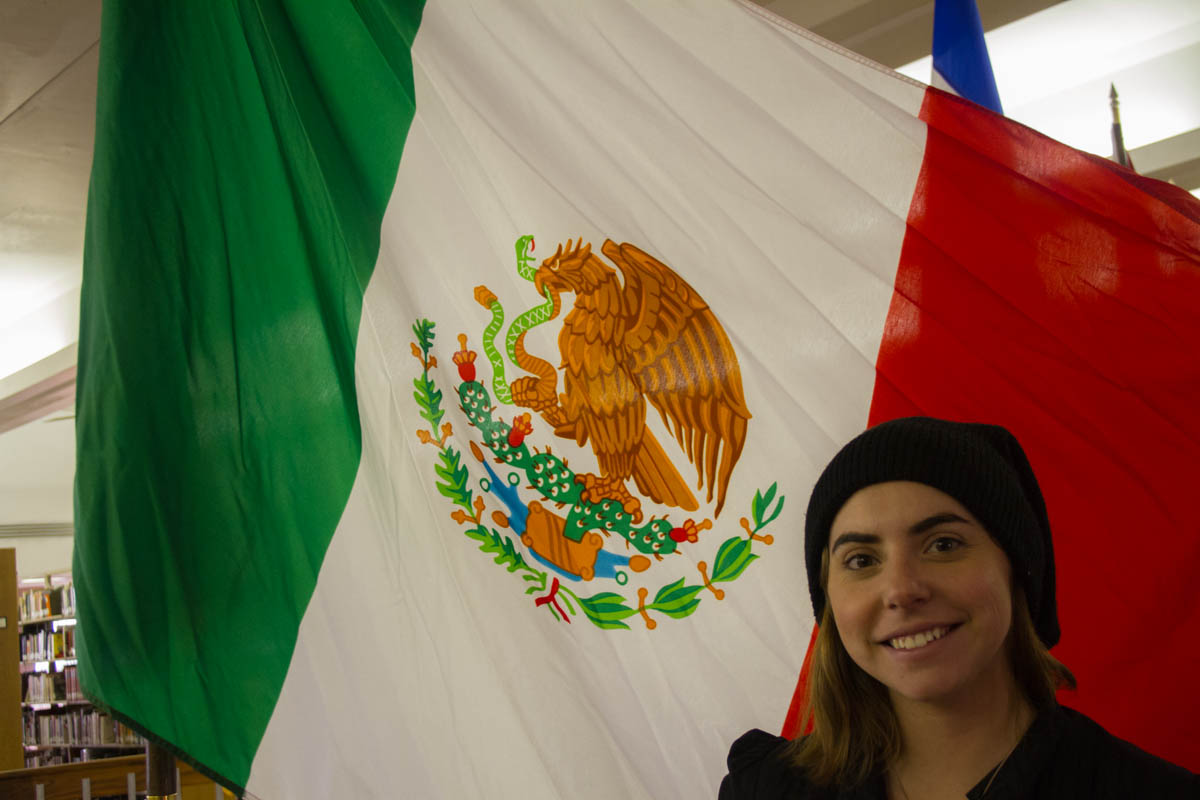

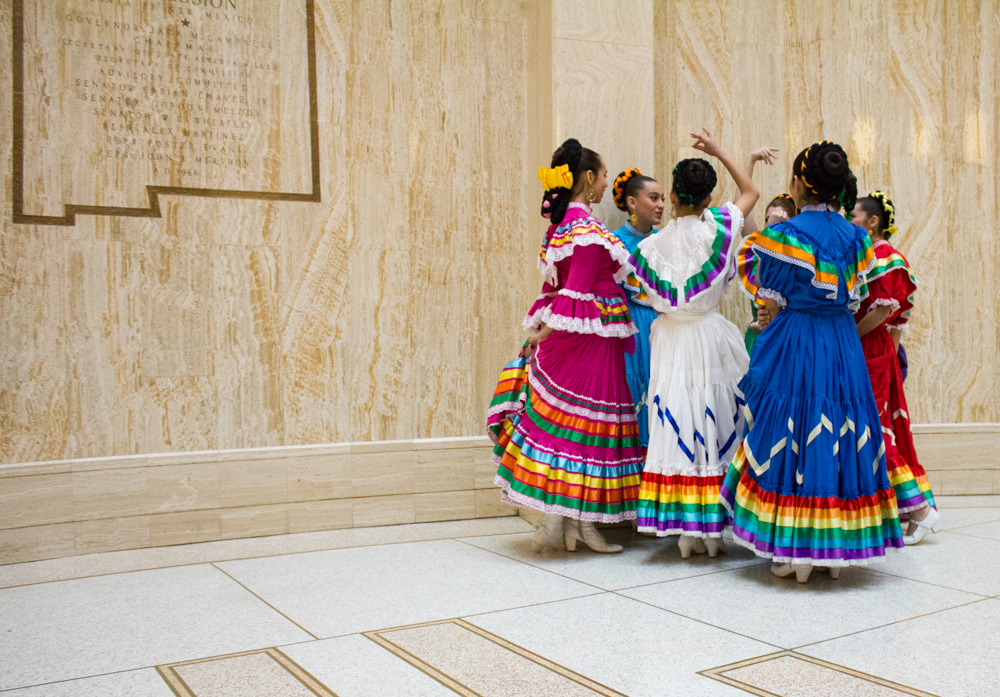
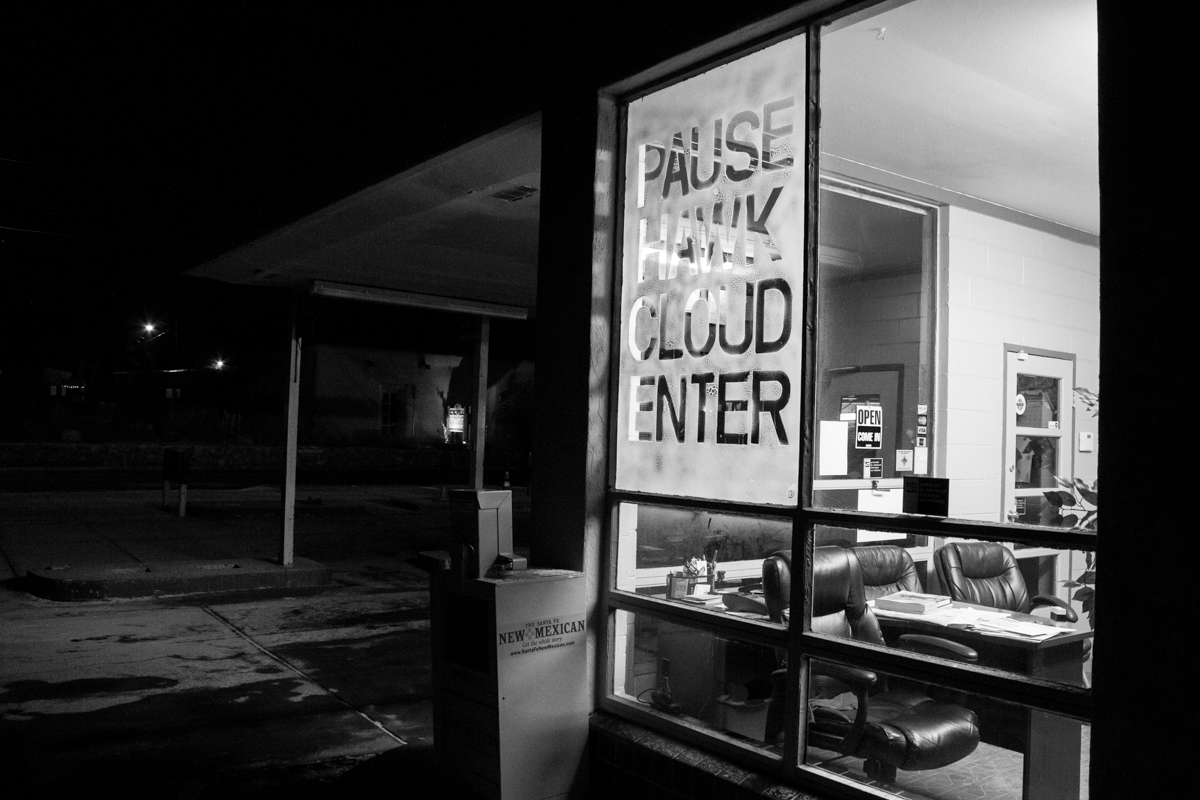

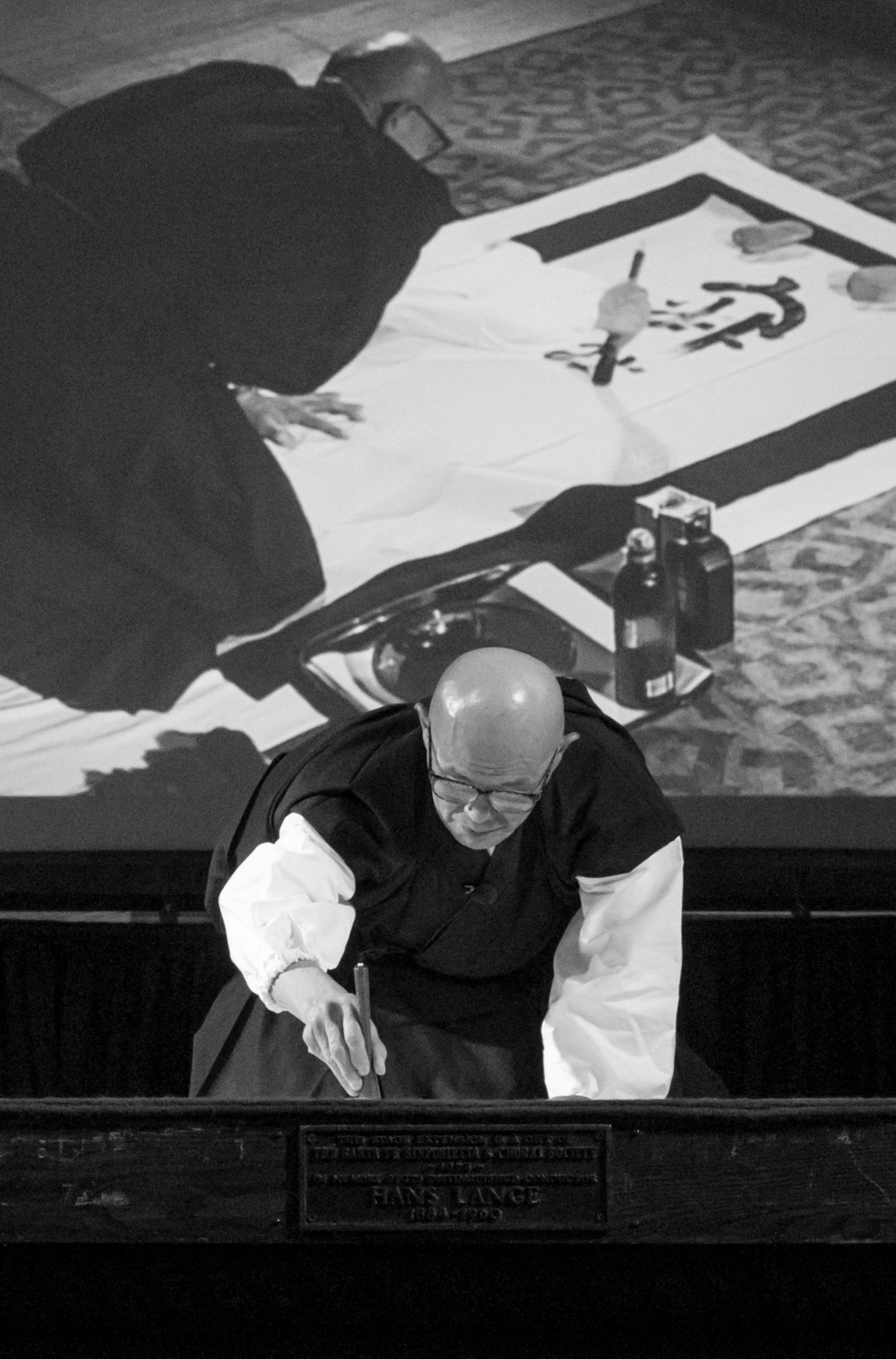

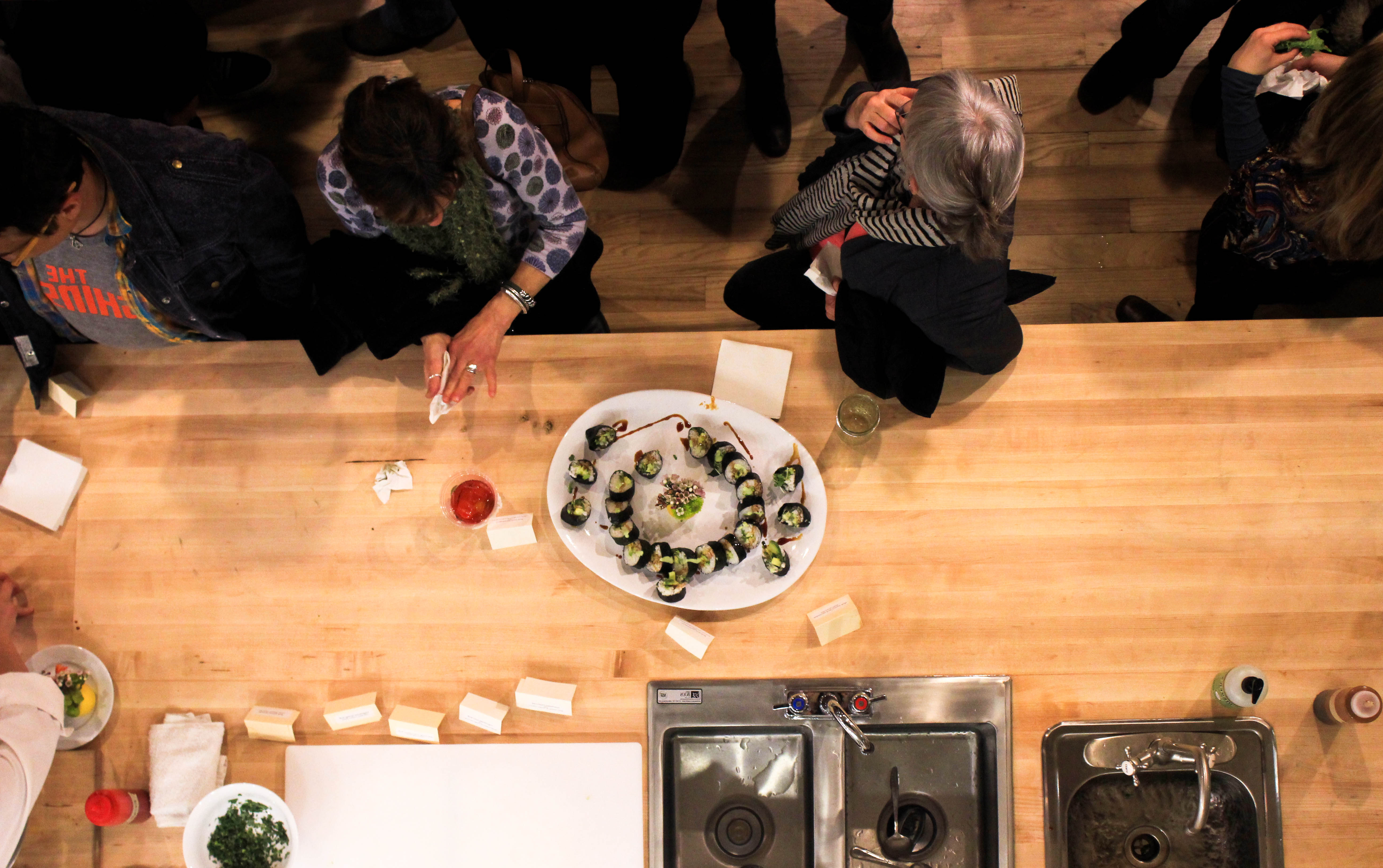
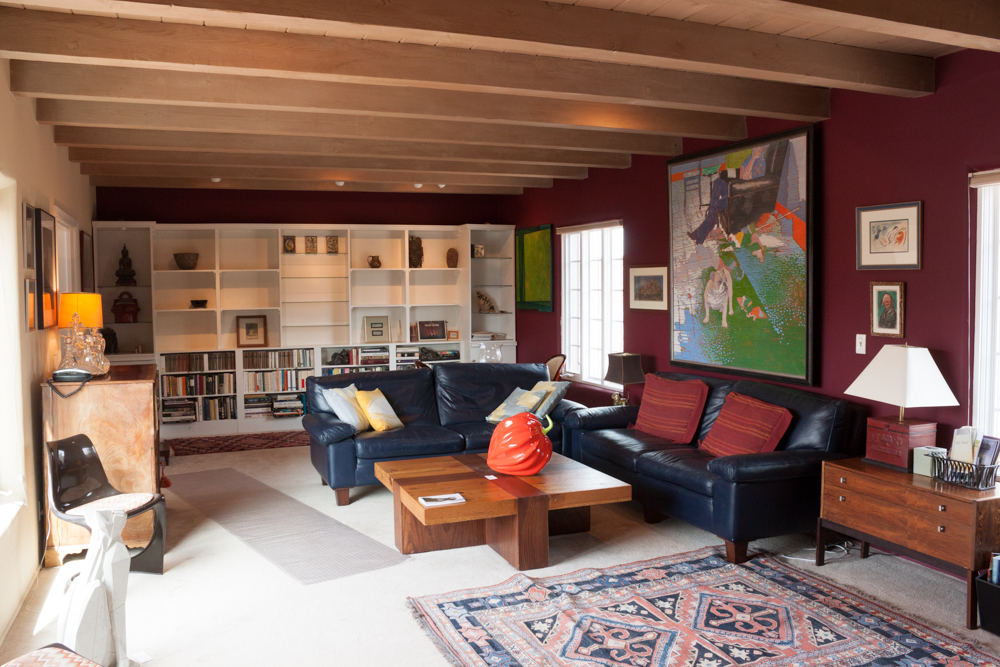
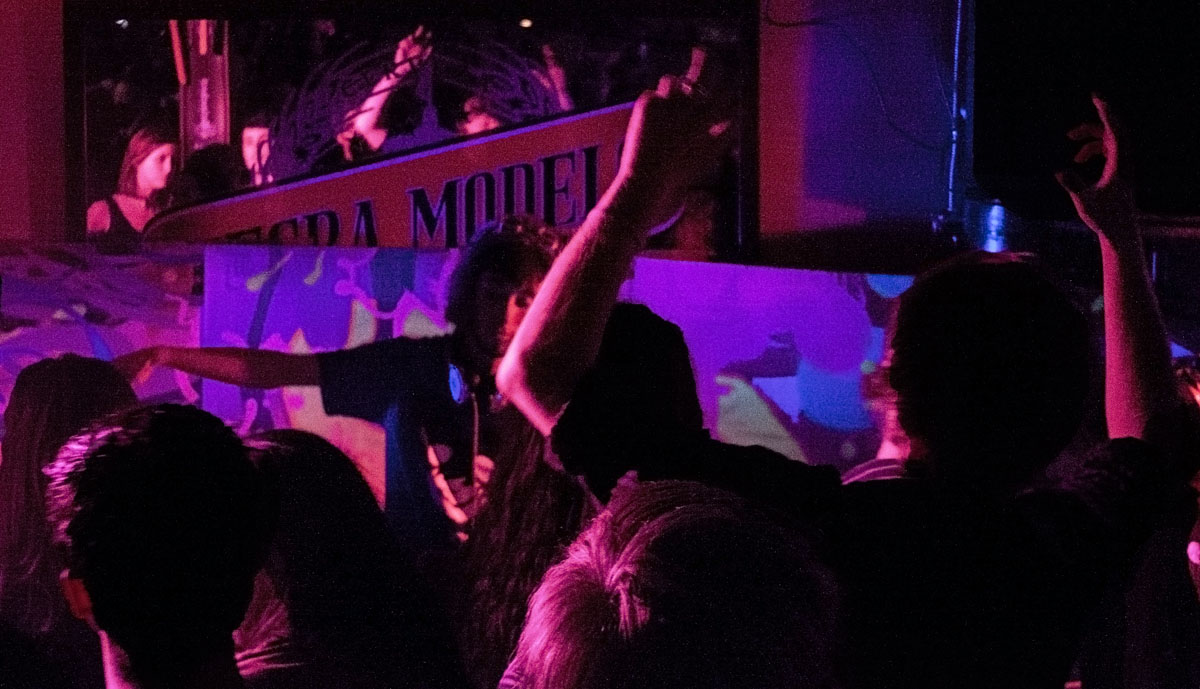
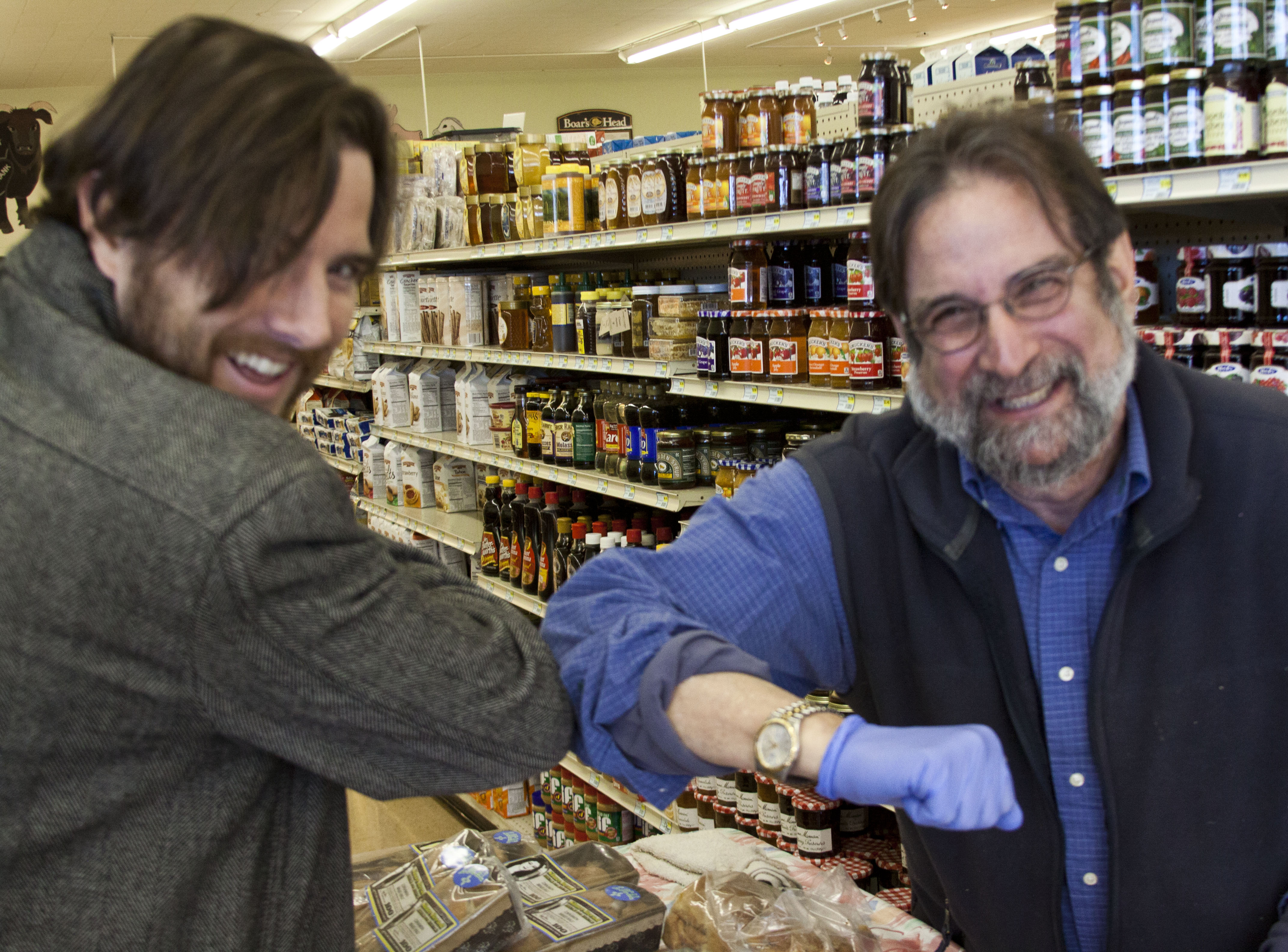

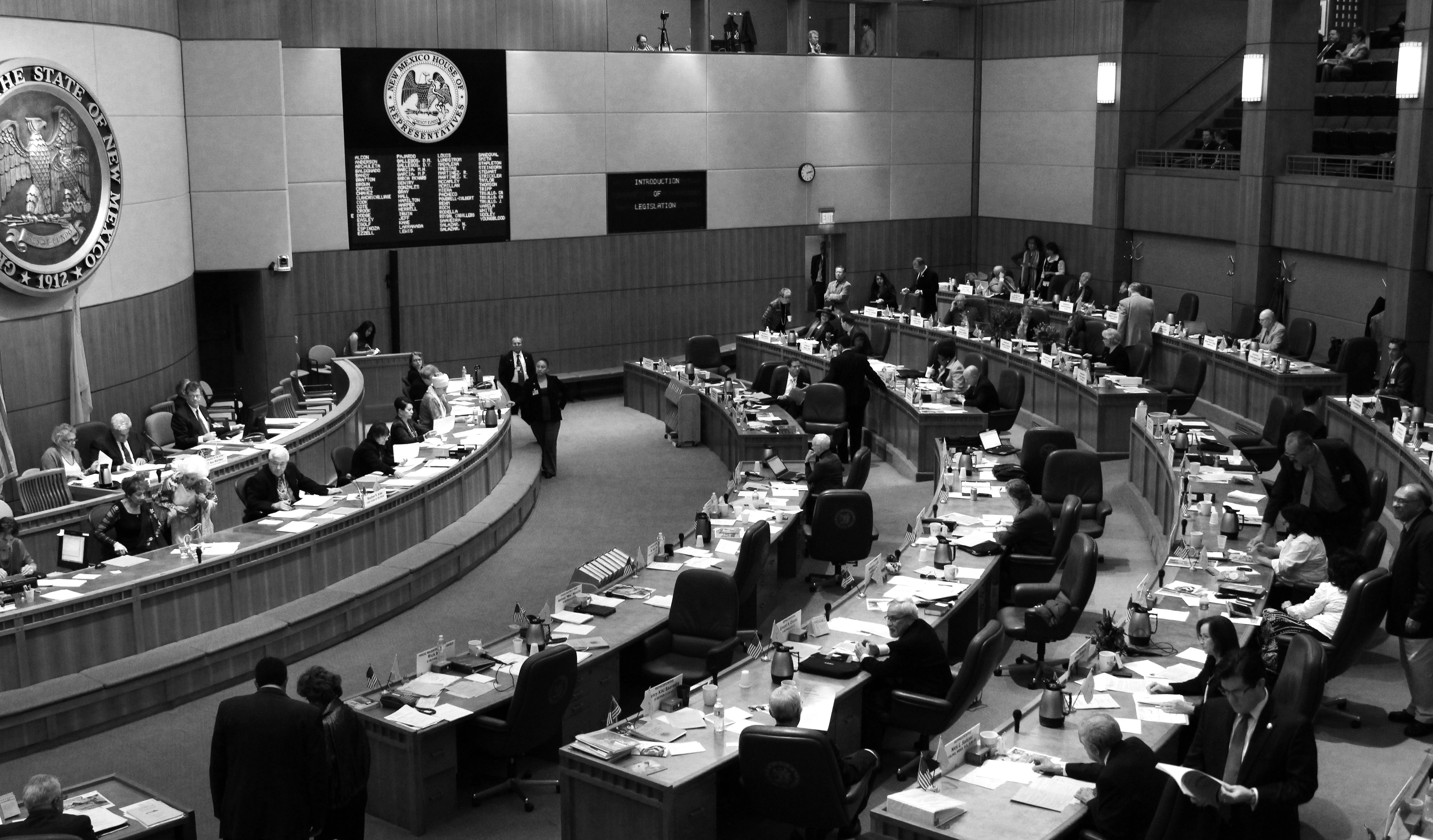
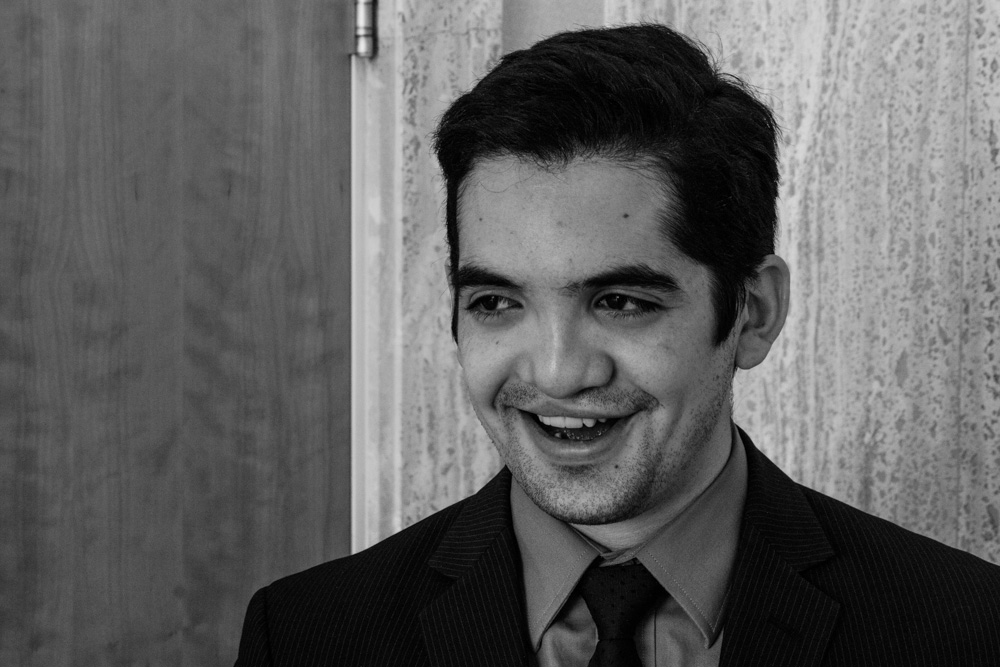
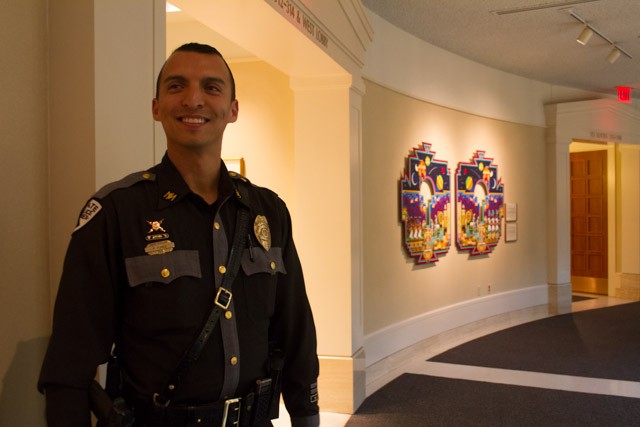
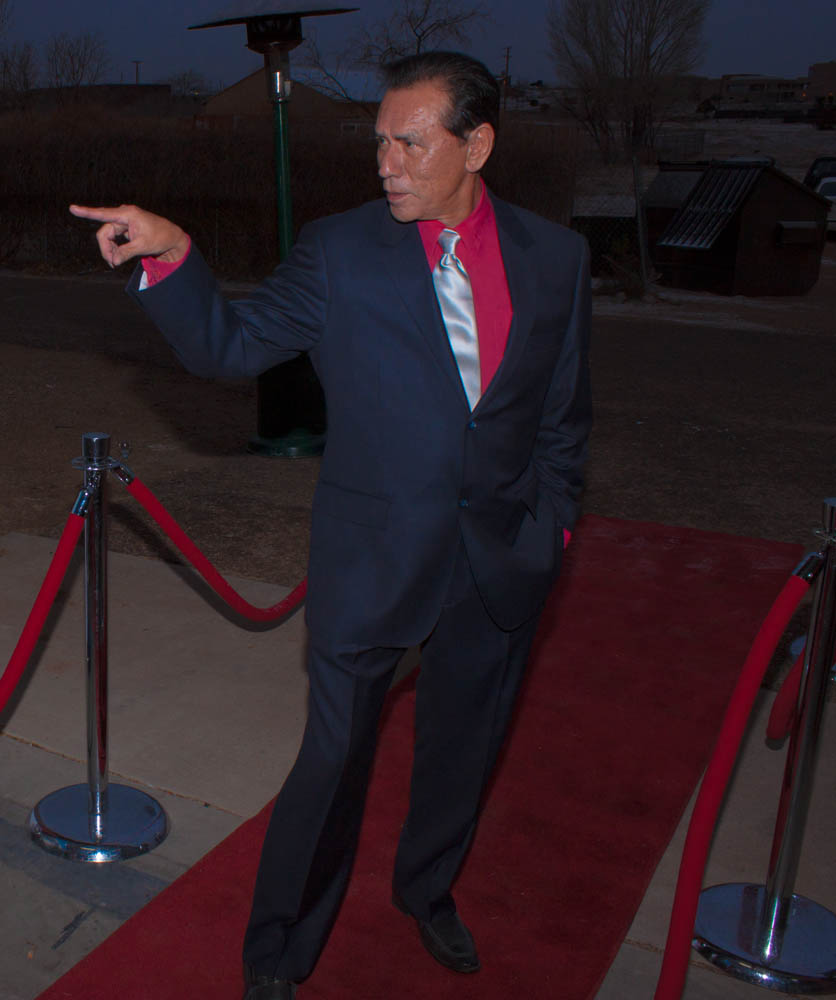
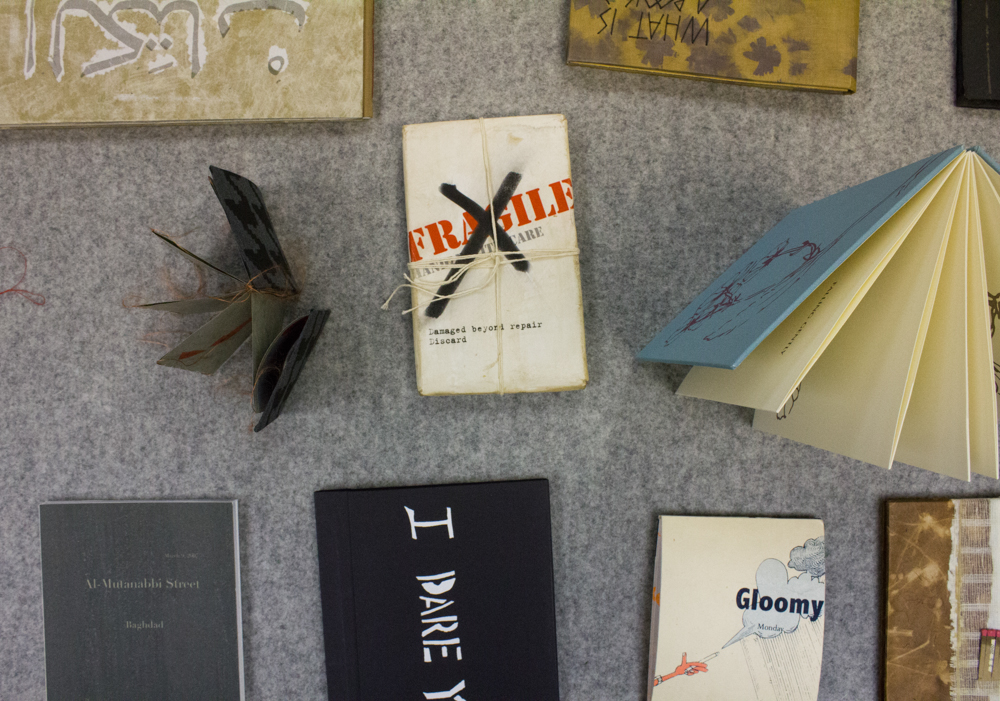
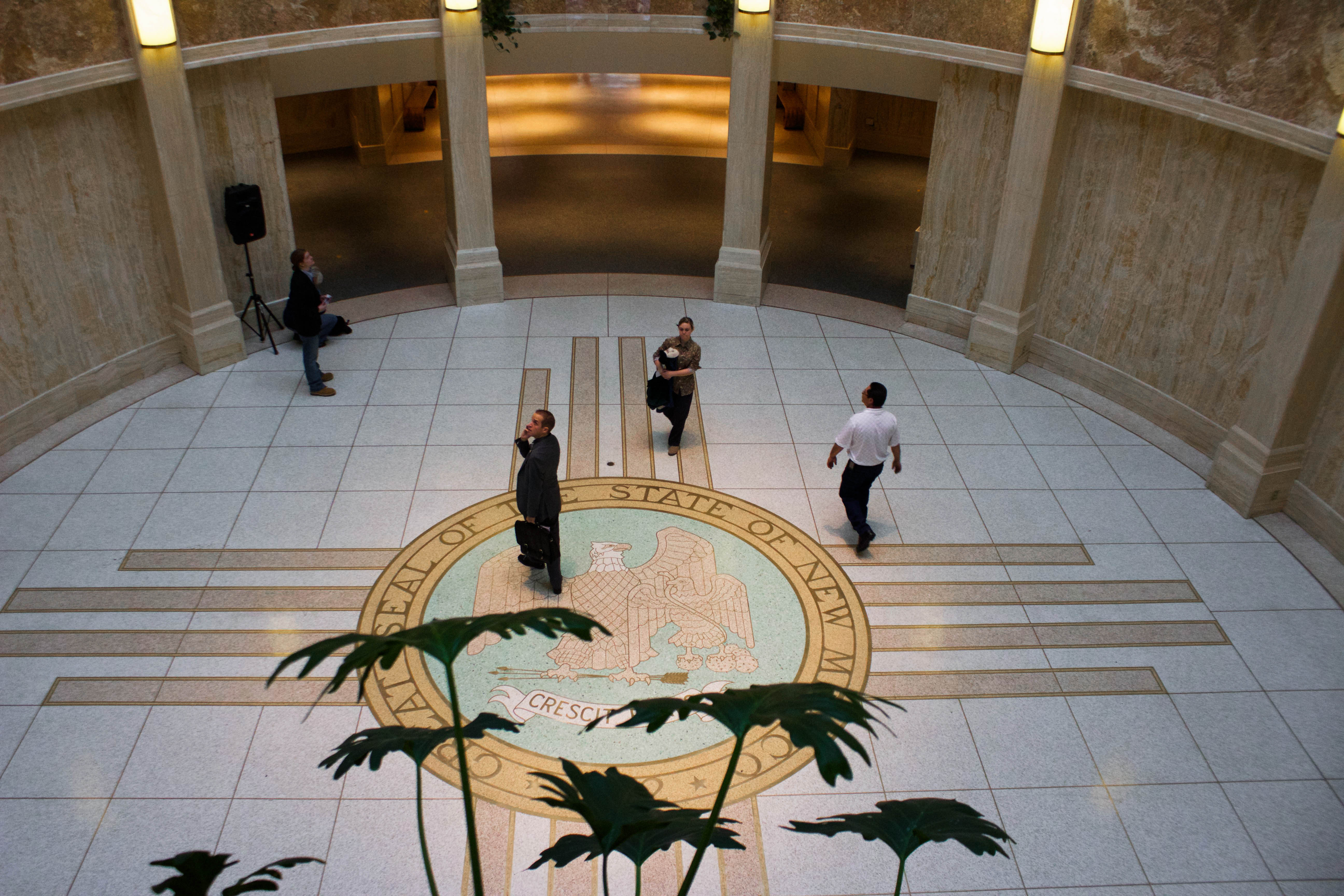
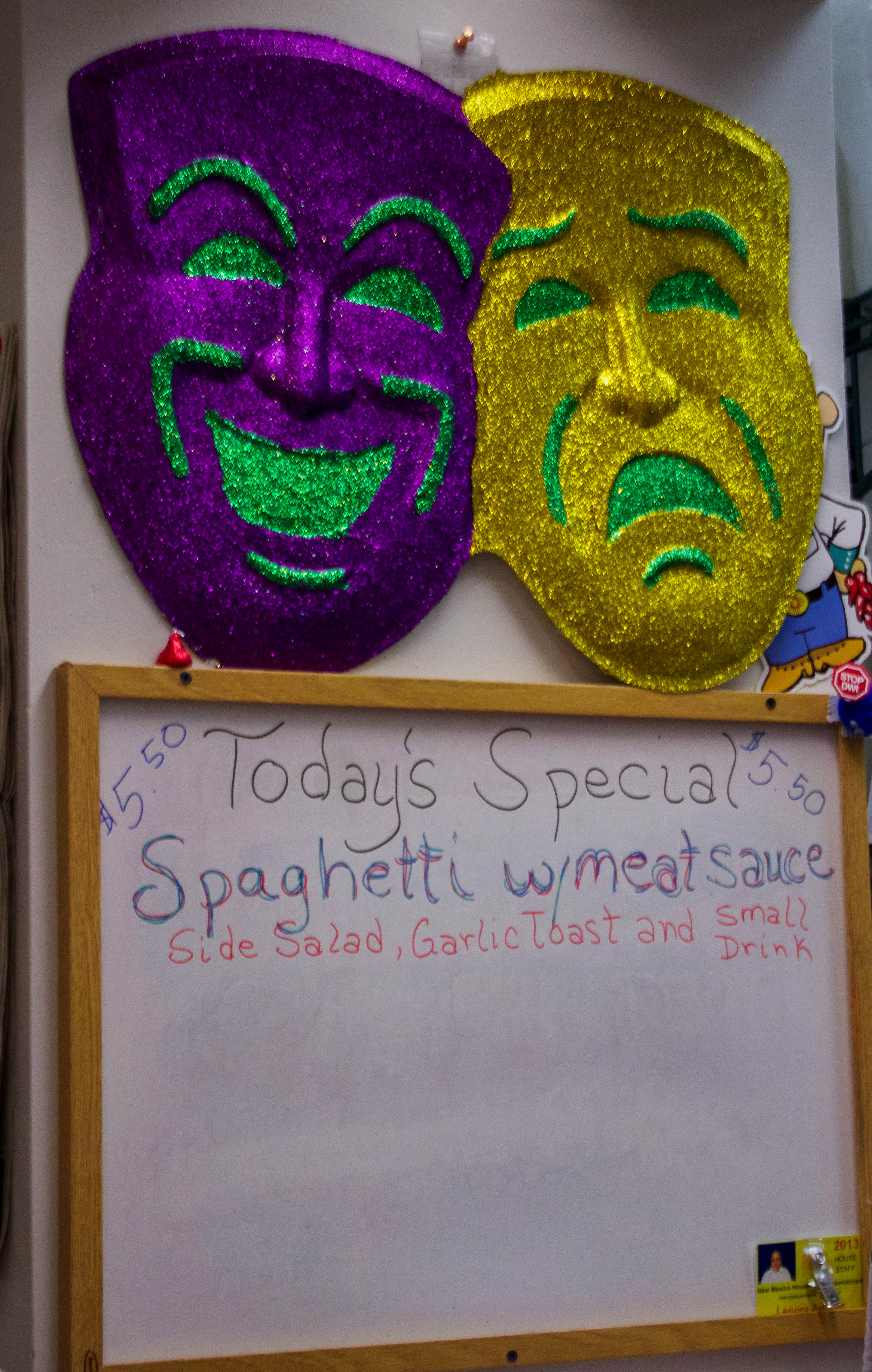
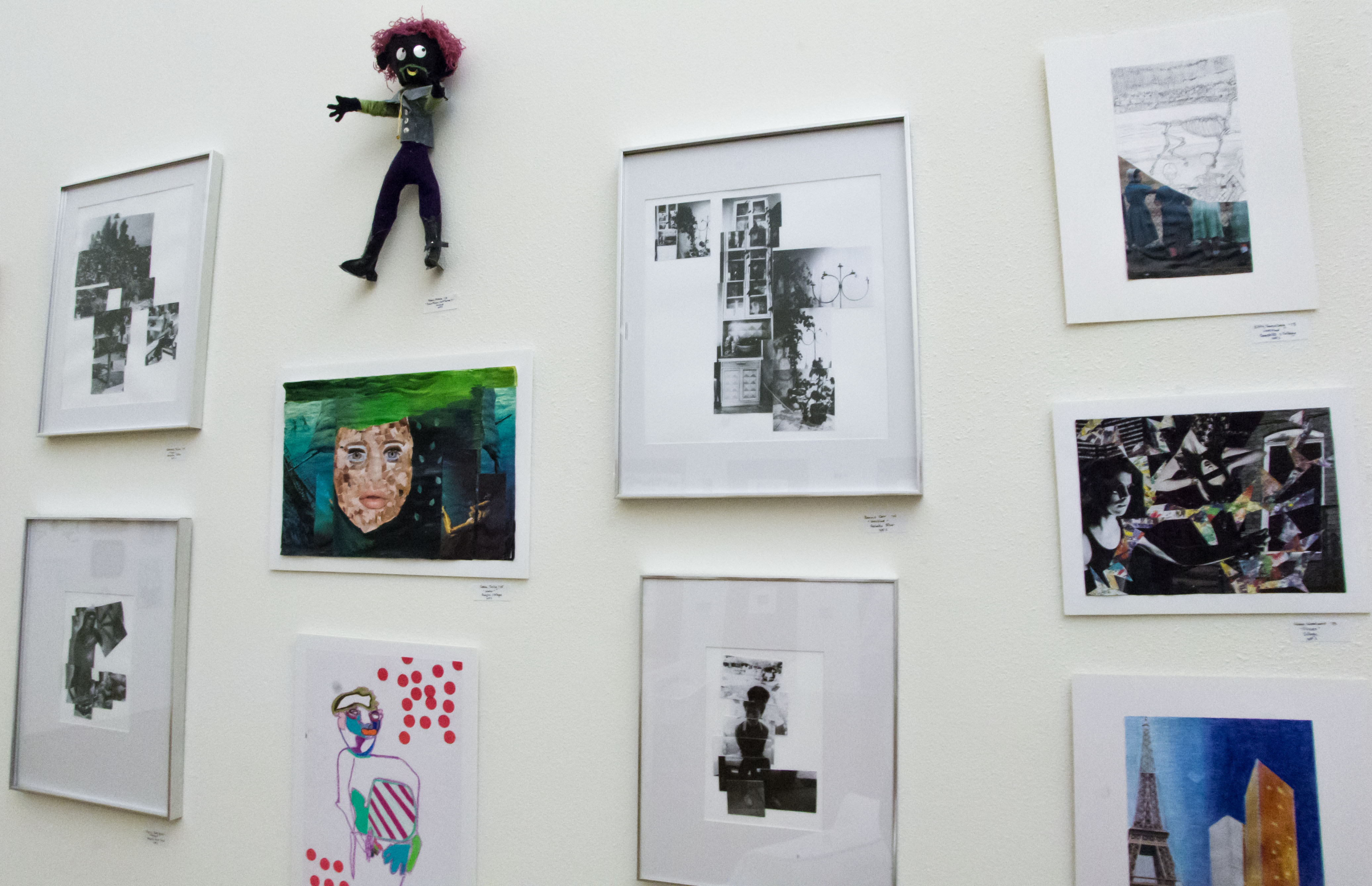
 Jackalope Magazine is the student magazine of Santa Fe University of Art and Design. Building on the interdisciplinary nature of our education, we aim to showcase the talent of our university and character of our city.
Jackalope Magazine is the student magazine of Santa Fe University of Art and Design. Building on the interdisciplinary nature of our education, we aim to showcase the talent of our university and character of our city.
Recent Comments